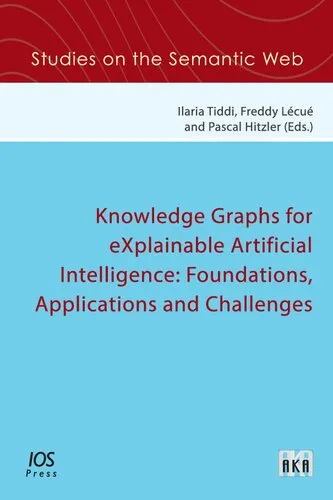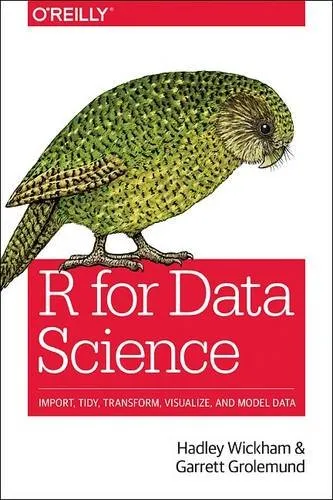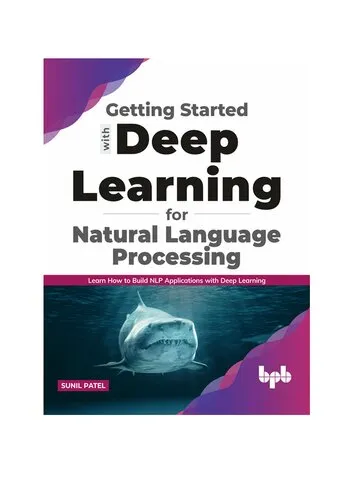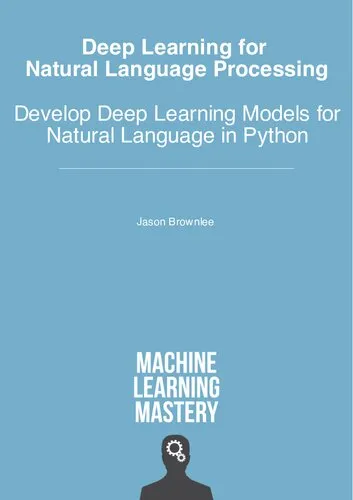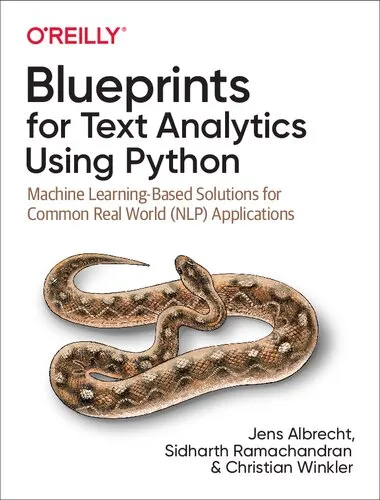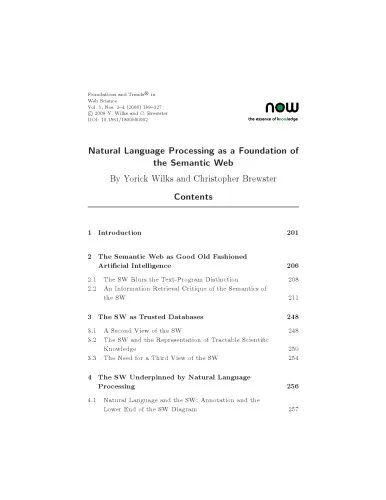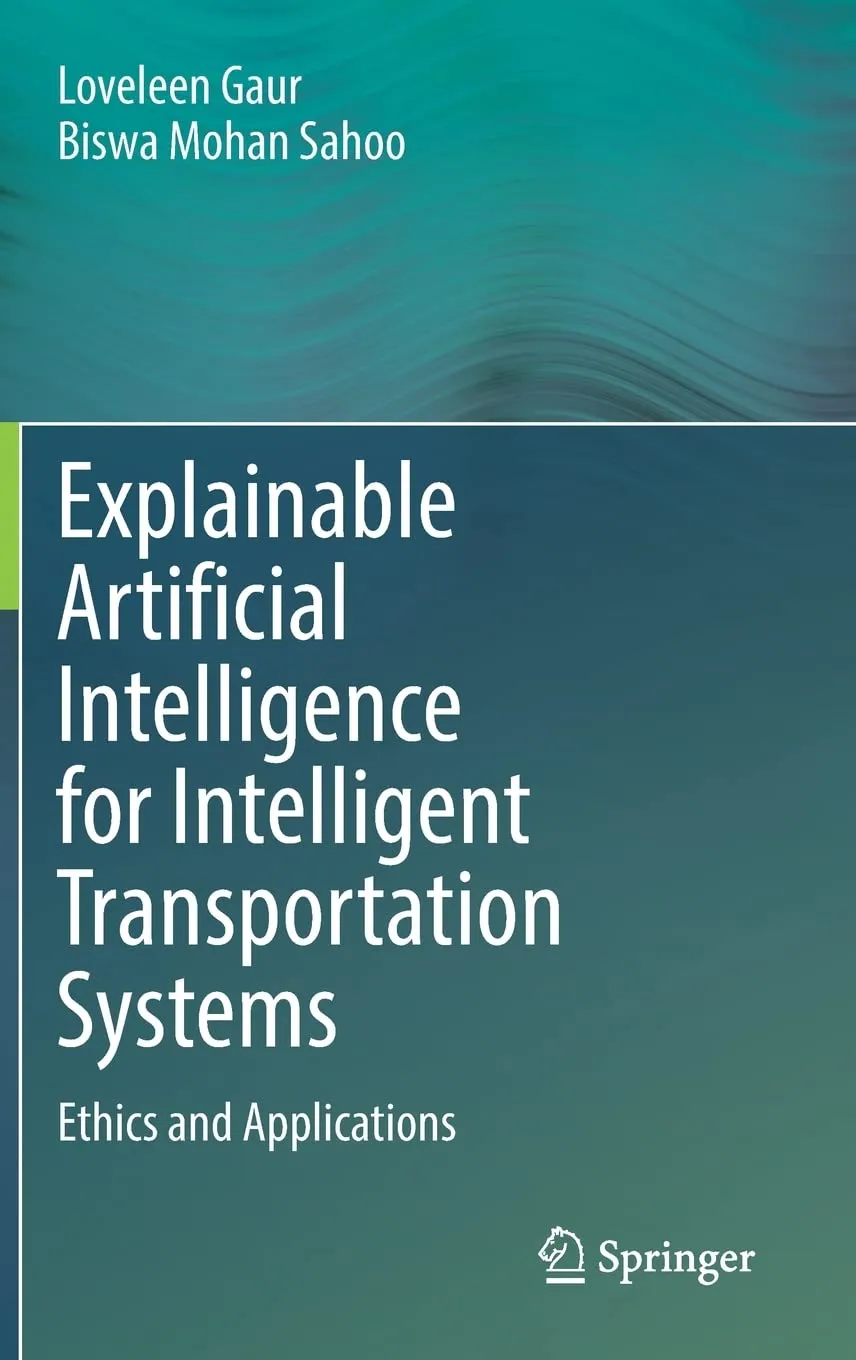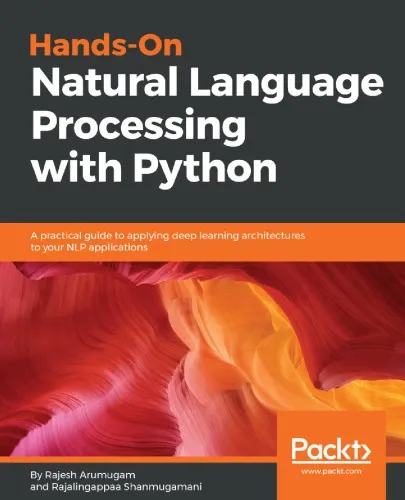Knowledge Graphs for eXplainable Artificial Intelligence: Foundations, Applications and Challenges (Studies on the Semantic Web)
4.0
بر اساس نظر کاربران

شما میتونید سوالاتتون در باره کتاب رو از هوش مصنوعیش بعد از ورود بپرسید
هر دانلود یا پرسش از هوش مصنوعی 2 امتیاز لازم دارد، برای بدست آوردن امتیاز رایگان، به صفحه ی راهنمای امتیازات سر بزنید و یک سری کار ارزشمند انجام بدینکتاب های مرتبط:
معرفی کتاب
کتاب "Knowledge Graphs for eXplainable Artificial Intelligence: Foundations, Applications and Challenges" اثری جامع در زمینه تقاطع علوم هوش مصنوعی، گرافهای دانش و قابلیت توضیحپذیری میباشد. این کتاب بخشی از مجموعه ارزشمند "Studies on the Semantic Web" بوده و به روشی چندبُعدی، خواننده را با مفاهیم اصلی، کاربردها و چالشهای جاری در این حوزه آشنا میکند.
در دنیای مدرن، استفاده از AI برای تصمیمگیریهای پیچیده به سرعت در حال افزایش است. اما نیاز به توضیحپذیری این الگوریتمها به دلیل شفافیت، اعتمادسازی و پذیرش بشری به شدت احساس میشود. این کتاب تلاشی گرانبها برای ارائه یکی از پیشرفتهترین روشها یعنی Knowledge Graphs یا گرافهای دانش به عنوان ابزاری برای پیادهسازی قابلیتهای Explainable AI (XAI) است. در این اثر، پایههای نظری، مثالهای عملی، و چالشهای آتی این حوزه به شیوایی و با دقت توضیح داده شده است.
خلاصه کتاب
کتاب حاضر در شش بخش اصلی، گرافهای دانش را به عنوان ابزار توانمند در بین تکنولوژیهای XAI معرفی میکند. بخشهای اولیه به تعاریف، پیشینه تاریخی و ساختار گرافها اختصاص دارد. در ادامه، استفاده از این ساختارها برای توضیحپذیری هرچه بیشتر الگوریتمهای AI مورد بررسی قرار میگیرد. همچنین، نمونههایی از کاربردها در صنایع مختلف مانند سلامت، مالی، و هوش تجاری ارائه شدهاند.
در بخشهای پایانی کتاب، چالشهای استفاده از Knowledge Graphs مانند پیچیدگیهای محاسباتی، طراحی مدل، و تأثیرپذیری از خطاها مورد بحث قرار گرفتهاند. نویسندگان همچنین به گسترش آینده این فناوری، از جمله همگرایی فناوریهای Semantic Web و یادگیری ماشین نیز میپردازند.
نکات کلیدی
- پایههای نظری گرافهای دانش و ارتباط آنها با AI.
- نقش Explainable AI در تقویت شفافیت، اعتماد و پذیرش سیستمهای هوشمند.
- کاربردهای عملی گرافهای دانش در حوزههای متنوع همچون مراقبتهای بهداشتی و صنعت.
- چالشهای طراحی، اجرا و ایمنسازی گرافهای دانش.
- چشمانداز آینده فناوریهای ترکیبی Semantic Web و AI.
نقلقولهای معروف از کتاب
"Transparent AI systems are not just a technological requirement but a societal necessity to ensure fairness and trust."
"Knowledge Graphs are bridges between raw data and meaningful, explainable insights."
چرا این کتاب مهم است؟
در عصر پیچیده فناوری امروز، توسعه سیستمهای تصمیمگیر با شفافیت بالا به یکی از اصول کلیدی تبدیل شده است. این کتاب نه تنها مبانی تئوری این حوزه را برجسته میسازد، بلکه پلی میان تحقیقات دانشگاهی و نیازهای صنعت ایجاد کرده است. از طریق ارائه راهکارهای عملی و تمرکز بر Explainable AI، این اثر نقشی بیبدیل در پیشبرد فناوریهای مبتنی بر گرافهای دانش ایفا میکند. دانشآموختگان، محققان و فعالان فناوری اطلاعات با مطالعه این کتاب میتوانند نگاهی دقیقتر به چگونگی حل مشکلات پیچیده امروز از طریق XAI داشته باشند و همچنین در مسیر پیشرفتهای آتی سهیم شوند.
Introduction to "Knowledge Graphs for eXplainable Artificial Intelligence: Foundations, Applications and Challenges"
"Knowledge Graphs for eXplainable Artificial Intelligence: Foundations, Applications and Challenges" is a definitive work exploring the intersections of Knowledge Graphs (KGs) and Explainable Artificial Intelligence (XAI). As Artificial Intelligence increasingly permeates various domains, the demand for explainable systems has grown exponentially. This book addresses this need by illustrating how knowledge graphs can be pivotal in creating transparent and trustworthy AI systems. Authored by domain experts, it provides a comprehensive dive into key concepts, theoretical underpinnings, real-world applications, and future challenges in the field.
Detailed Summary of the Book
Spanning several chapters, the book starts by laying a strong foundation for readers, introducing them to the core principles of both knowledge graphs and explainable Artificial Intelligence. It begins by defining what makes a system "explainable" and why it is crucial in various applications such as healthcare, finance, and autonomous systems. Following this, it transitions into the vast, interconnected world of knowledge graphs, presenting their role as structured representations of data and their ability to enhance system transparency and reasoning.
The book further explores how knowledge graphs serve as powerful tools to integrate symbolic reasoning with machine learning techniques. Through real-world case studies, readers gain insights into how KGs operationalize explainability, making complex AI models interpretable to users. It also delves into advanced methods for reasoning over knowledge graphs, such as graph embeddings, logical frameworks, and neuro-symbolic techniques.
A significant section of the book is dedicated to applications in diverse industries. For instance, the healthcare sector demonstrates the application of explainable AI systems for aiding clinical decisions, while the financial industry showcases how responsibly-informed AI models can lead to risk-reduction and fraud detection. The book ends by addressing the open challenges faced by developers and researchers, including ethical considerations, scalability issues, and the need for unified standards in KG-based XAI.
Key Takeaways
- Knowledge graphs enhance AI systems' interpretability by structuring actionable knowledge.
- Explainable AI is essential for fostering trust and ensuring ethical AI deployment.
- By integrating symbolic knowledge and machine learning, KGs help bridge the gap between data and meaningful explanations.
- Real-world case studies in the book provide actionable insights into using KGs for XAI across various domains.
- The book highlights future challenges and directions for research and development in this rapidly evolving field.
Famous Quotes from the Book
"Transparency is not a luxury in AI, but a necessity. Knowledge graphs offer a way to peel back the layers of AI systems and see the rationale behind the outcomes."
"Explainability is not just about making systems comprehensible to experts. It’s about making AI understand the world the way humans do."
Why This Book Matters
This book is a timely resource for researchers, practitioners, and students in the fields of knowledge engineering, machine learning, and artificial intelligence. As AI becomes increasingly woven into the fabric of modern society, the stakes for transparency and trustworthiness in AI systems have never been higher. This work recognizes the dual-purpose role knowledge graphs play—not only as a tool for organizing knowledge but also as a mechanism to explain complicated AI models in understandable terms.
Additionally, the book serves a critical role in addressing the societal and ethical dimensions of AI technologies. It advocates for responsible AI practices and offers actionable approaches to embedding accountability in AI systems. For anyone looking to bridge the gap between cutting-edge AI technologies and their practical, explainable implementations, this book is an indispensable guide.
In conclusion, "Knowledge Graphs for eXplainable Artificial Intelligence: Foundations, Applications and Challenges" is more than just a technical manual. It is a vision for a future where AI systems are as transparent and reliable as they are powerful, enabling humans to truly trust and collaborate with intelligent systems. This book matters because it paves the way for that future.
دانلود رایگان مستقیم
شما میتونید سوالاتتون در باره کتاب رو از هوش مصنوعیش بعد از ورود بپرسید
دسترسی به کتابها از طریق پلتفرمهای قانونی و کتابخانههای عمومی نه تنها از حقوق نویسندگان و ناشران حمایت میکند، بلکه به پایداری فرهنگ کتابخوانی نیز کمک میرساند. پیش از دانلود، لحظهای به بررسی این گزینهها فکر کنید.
این کتاب رو در پلتفرم های دیگه ببینید
WorldCat به شما کمک میکنه تا کتاب ها رو در کتابخانه های سراسر دنیا پیدا کنید
امتیازها، نظرات تخصصی و صحبت ها درباره کتاب را در Goodreads ببینید
کتابهای کمیاب یا دست دوم را در AbeBooks پیدا کنید و بخرید
1221
بازدید4.0
امتیاز0
نظر98%
رضایتنظرات:
4.0
بر اساس 0 نظر کاربران
Questions & Answers
Ask questions about this book or help others by answering
No questions yet. Be the first to ask!
